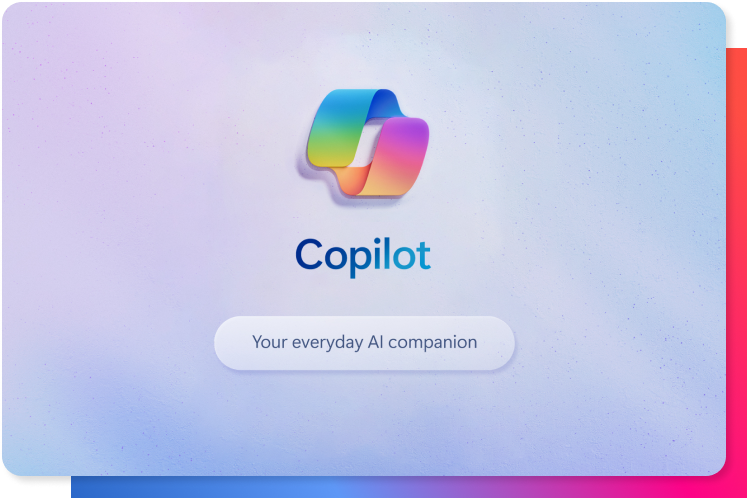Artificial intelligence is no longer just a tool—it is beginning to play an active role within teams. AI agents are taking on tasks and responsibilities that were, until recently, the exclusive domain of humans.
According to Accenture (2024), companies that have deeply transformed their processes using artificial intelligence not only optimize operational efficiency: they achieve 2.5x higher revenue growth, 2.4x greater productivity, and 3.3x more success in scaling generative AI use cases compared to those that haven’t.
In this article, we explore how your organization can anticipate, adapt, and lead in this new era of hybrid teams, where AI agents and humans work side by side. This goes beyond efficiency—the real challenge is strategic: how can you design structures that integrate this new kind of talent in a way that drives sustainable competitive advantage, rather than merely automating tasks?
The adoption of AI Agents is a strategic decision
The question is no longer if to adopt AI, but how and where to deploy it to maximize impact. Just as electricity, industrial automation, or the internet once reshaped entire industries, AI is transforming how organizations operate, create value, and interact with customers.
The real potential of AI agents does not lie in their ability to automate tasks. Their value lies in improving productivity, accelerating decision-making, and opening new business opportunities. According to McKinsey, up to 70% of current work activities could be automated, freeing humans to focus on high-impact tasks. Harvard Business School adds that AI-driven automation drastically improves workflows by reducing errors and increasing speed.
During the pandemic, IBM reported $160 million in savings across its supply chain while maintaining a 100% order fulfillment rate. The key? Effectively integrating AI-based solutions into critical operations.The key difference between leading and lagging companies won’t be who uses AI, but how they integrate it: as a structural part of their operating model, not just a technical add-on. In other words, it’s not just about adopting technology, but about redesigning the organization to capitalize on it.
How to prepare your organization for AI Agents
Integrating AI agents requires more than a technological upgrade: it demands a structural redesign of teams and processes to maximize the synergy between human and artificial intelligence.
This transformation requires detailed planning, a well-articulated strategy, and a pragmatic approach to scaling new forms of collaboration.
Here’s a framework to guide different areas of your organization toward a truly hybrid work model:
- Map tasks, not roles. Break down each role into specific activities and assess their automation potential. Some tasks can be handled by AI agents, while others will still require human judgment. The goal isn’t to replace people but to redesign workflows that blend technical efficiency with contextual reasoning.
- Evaluate agents using standards comparable to human talent. Not all models are equally suited. Design a capabilities catalog by agent type (language processing, predictive analysis, content generation) to help select the most accurate tool for each case.
- Design clear rules for hybrid collaboration. Define shared responsibilities precisely: What tasks are delegated to AI? Which remain under human control? When does the transition between the two occur? Avoiding grey areas is key to minimizing operational friction and accountability risks.
- Establish strong legal and ethical frameworks. Include policies on model training, algorithmic decision traceability, bias management, and data governance. Organizational trust in AI agents is built on clear rules and well-defined control mechanisms.
- Capture value continuously. Unlike traditional software, AI agents evolve and improve with use. That’s why it’s critical to implement iterative feedback, adjustment, and continuous improvement processes. AI isn’t static—its performance depends on how it’s trained, monitored, and refined.
Ultimately, integrating AI is not a one-off action but an ongoing evolution that requires balance—leveraging algorithmic speed and accuracy without overlooking the irreplaceable value of human creativity, empathy, and judgment.
AI as a nervous system: Cross-functional integration to scale organizational value
Many organizations have already begun applying AI agents in specific functions—sales, logistics, marketing—with positive results. However, the greatest value emerges when AI agents transcend functional silos and become a digital nervous system that connects processes, teams, and decisions across the entire organization.
In this context, the challenge for leaders is to design AI adoption as part of a machine-human collaboration architecture that spans the entire company. What does that look like in practice?
- Customer support with continuity and precision
From the first marketing touchpoint to post-sale service, AI agents ensure a coherent experience. They automate responses, personalize offers, and ensure information availability so teams stay in sync. - Faster, evidence-based decision-making
Intelligent agents can monitor operational, financial, or market data in real time, identifying patterns, anomalies, or opportunities. They don’t replace leadership judgment—they enhance and accelerate it, becoming true strategic copilots. - Seamless management of cross-functional processes
Tasks shared between logistics, procurement, and finance—traditionally prone to friction—can be managed by agents that ensure traceability and reduce bottlenecks. - Personalized talent development support
In HR, agents can help detect skill gaps, map training needs, and personalize development paths for each individual in the organization. - Distributed, systemic innovation
A well-designed agent can track ideas from various sources (clients, employees, market trends), cluster them, and prioritize based on potential. This enables a collective innovation model where the entire organization contributes—not just an isolated team.
Hybrid talent in action: How leading companies are already integrating AI
More and more leading companies are implementing hybrid talent models where AI agents complement human capabilities across operations.
A compelling example is Findex, one of the leading financial services firms in Australasia. With support from Exomindset, Findex integrated an AI agent into its wealth management process, achieving seamless collaboration between technology and professional advisory.
- The AI agent intelligently transcribes and analyzes client interviews, extracting key data and structuring the information.
- From that analysis, it automatically generates personalized documentation that previously required several hours of manual work.
- Most importantly, the agent identifies ambiguous points, information gaps, or elements that require human validation.
In this final stage, the advisory team reviews the flagged content, applies professional judgment, and validates the final output. The model blends the best of both worlds: AI provides speed, consistency, and structure; humans bring contextual judgment, empathy, and trust.
The impact is clear: a drastic reduction in operational time, greater consistency in documentation, and the ability to redirect human talent toward higher-value activities.
The strategic adoption of AI agents is not about replacing people—it’s about creating a new collaboration model where each part brings its best.
The future of work: Evolving toward human–machine collaborative models
We are undergoing a paradigm shift. Hybrid teams—made up of people and AI agents—are no longer speculative futurism. They are an emerging reality silently transforming the architecture of modern work.
To lead in this new landscape, leaders must develop entirely new organizational capabilities: managing mixed teams, designing collaborative workflows between humans and algorithms, and fostering a culture that values the coexistence of critical thinking and computational power.
At the same time, it will be essential to strengthen the distinctly human skills that AI cannot replicate: ethical judgment, creativity, complex problem-solving, empathy, and adaptability.
According to a report by McKinsey Global Institute, by 2030, up to 30% of work hours in many sectors may be performed by AI systems or advanced automation. In this context, adapting to a hybrid model is not just a competitive advantage—it’s a strategic imperative.
Ultimately, the future of work is not human or artificial. It’s human plus artificial. The organizations that learn how to orchestrate this synergy with purpose, governance, and vision will be the ones leading the next chapter of the knowledge economy.







 Español
Español